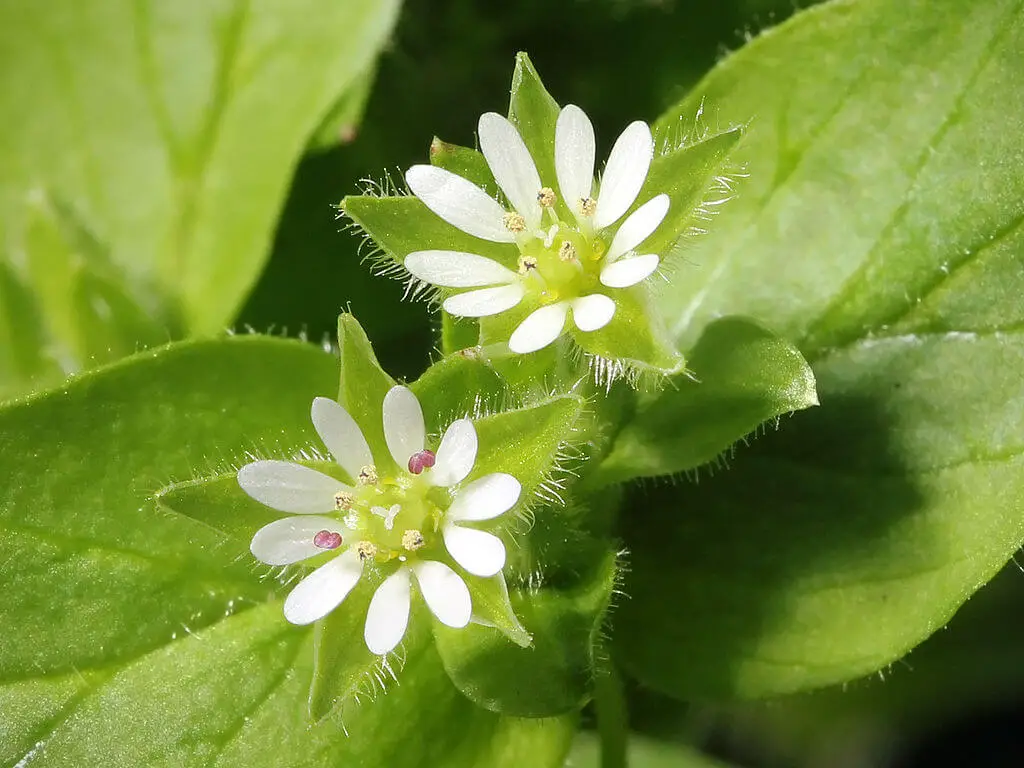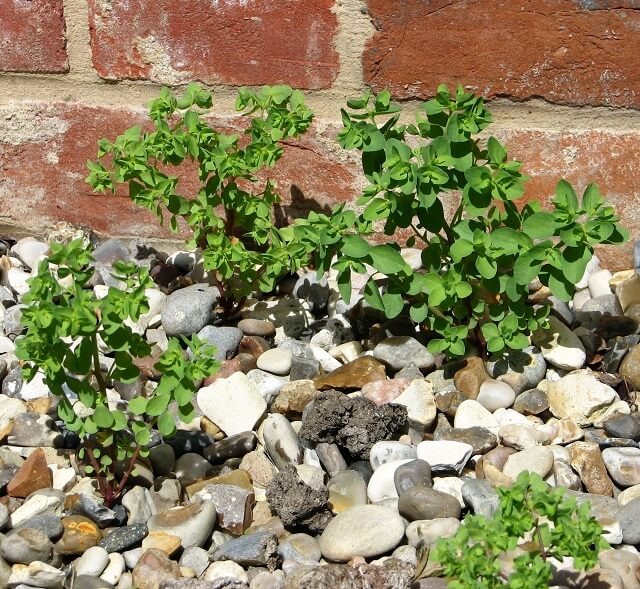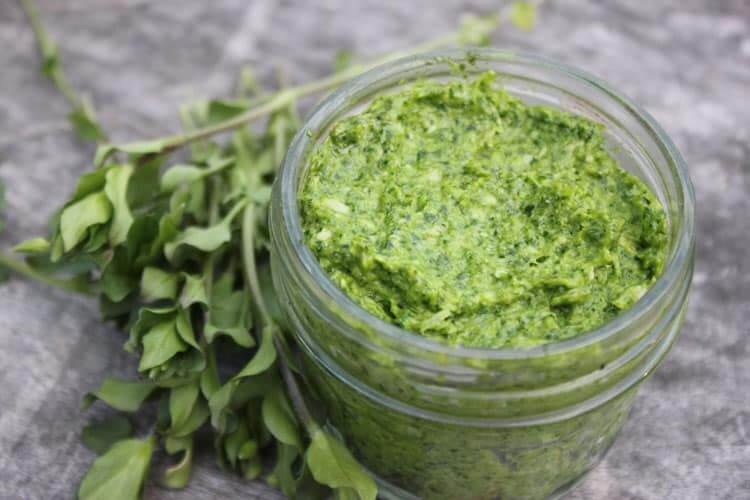A cool-season annual plant, chickweed is sometimes considered a weed. In addition to being used as a cooling herbal remedy, this species is cultivated to serve as a vegetable crop and ground cover for human and poultry consumption.
Stellaria media plant profile
| Scientific name | Stellaria media |
| Family name | Caryophyllaceae |
| Plant type | Annual and perennial flowering plant |
| Kingdom | Plantae |
| Genus | Chickweeds |
| Phylum | Vascular plant |
| Habitat | Winter annual |
| Flower color | White |
| Bloom time | February – December |
Common names include:
- Chickenwort
- Birdweed
- Chickweed
- Starweed
- Common chickweed
- Winterweed
- Starwort
Tiny, star-shaped, white flowers with five petals grow alone or in small clusters at the end of stems.
The fruit is a round, straw-colored capsule that contains reddish brown seeds.
What Are You Foraging For Right Now?
We're thrilled to hear your ideas. What would you like to submit today? Feel free to share your thoughts and experiences with us.
Where does Chikweed grow?
The common chickweed is a cool-weather plant native to Europe/Eurasia that has spread widely throughout North America.
It is commonly found on lawns and other sun areas to partial shade like roadsides.
Stellaria media Identification
An invasive species of flora, it can grow erect to prostrate and sometimes resembles a mat. This plant produces stems that are approximately 1/2 to 1 foot long. It branches abundantly near the base of the stem but very little toward the tips.
It has somewhat succulent stems that are green or burgundy in color, and they are often covered with fine hairs.
The stems of these plants are adorned with pairs of opposite leaves at regular intervals, mostly forked, and have a line of hair along either side.
On the upper surface, the leaves are oval-ovate, entire (toothless) along their margins, and hairless on the lower surface.
A small cyme of white flowers arises from the axils of the outer pairs of leaves, while individual flowers appear from the axils of the outer pairs of leaves. Bracts are approximately 1/32 to 1/2 inch long and egg-shaped, resembling small leaves.
The flowers measure approximately 1/4″ across, containing 5 white bifid petals, 5 green sepals, 3 white styles, 2-10 stamens, and an ovary that appears light green in color.



Pedicels are finely pubescent and bloom starting in early spring through end of spring, unlike its cousin, greater chickweed (S. neglecta), which blooms from April through July.
A cylindrical seed capsule containing several seeds replaces each flower, which are light brown in color with six small teeth along the upper rim.
Mature seeds are reddish brown, somewhat flattened, and orbicular-reniform; their surfaces have minute bumps.
The life cycle is year-round, as seeds can germinate at any time of the year, though they are most likely to do so in spring and autumn. Ideally, germination happens between 15°C.
Is common chickweed edible?
The whole plant, except for the roots, is edible.
If eaten raw, it has a taste similar to corn on the cob or corn silk. When cooked, it takes on the characteristics of spinach.
Before using the plant, always chop it into bite-sized pieces, excluding the roots. Leaves and flowers from this plant are edible, although their saponins can cause stomach upset in large quantities.
Do not eat anything that looks like chickweed but has orange flowers. This is a toxic look-alike known as scarlet pimpernel.
A second toxic look-alike is young, common spurge (Euphorbia peplus), which usually grows in patches of chickweed, so remain vigilant when foraging for chickweed so you can avoid these imposters.


How to use common chickweed in the kitchen
The flowers and leaves of chickweed can be eaten raw or cooked. You can use fresh flowers and leaves in salads, stir-fries, stews, and pestos.
I recommend checking out the following recipes using chickweed:
- Spring pesto with chickweed and green garlic
- Chickweed grilled cheese recipe
- Lamb’s quarter and chickweed salad with elm samaras

What else is stellaria media used for?
The culinary uses of chickweed may appear relatively ordinary, but chickweed’s nutritional power is extremely impressive.
Chickweed contains vitamins C, D, and B-complex and calcium, iron, potassium, magnesium, zinc, beta carotene, biotin, and PABA.
Medicinal benefits include:
- Salve and balms made from chickweed are effective remedies for irritated skin, rashes, acne, bug bites, eczema, wounds, and warts.
- Chickweed teas and tinctures relieve coughs and congestion, soothe upset stomachs, and cleanse the liver, bladder, and kidneys.
- A person suffering from arthritis can benefit from the anti-inflammatory properties of chickweed.
- Chickweed can be used in a variety of homemade beauty products to soften skin and hair and remove toxins.
Ana has always been interested in all things nature and flora. With her expertise in home gardening and interest in foraging, she has been spending her weekends and free time looking for edible native plants, flowers, and fungi. One of her many hobbies includes testing new savory and sweet recipes, juices or teas made from freshly picked plants, wild fruits, or mushrooms.

